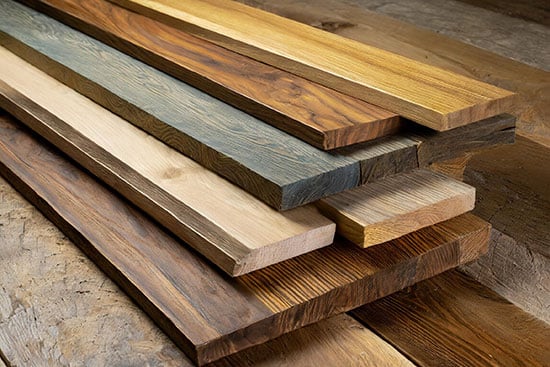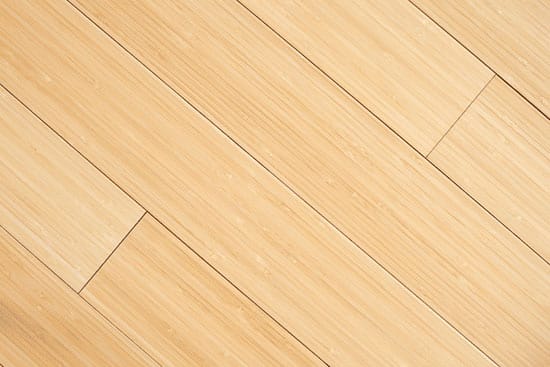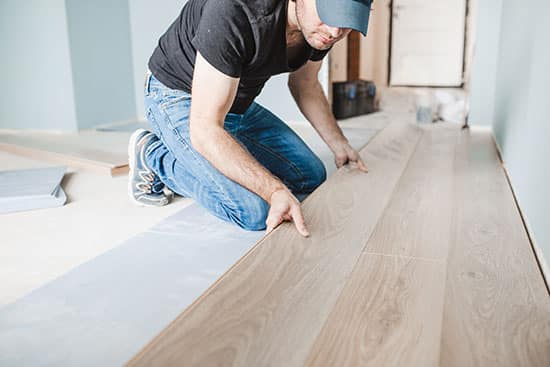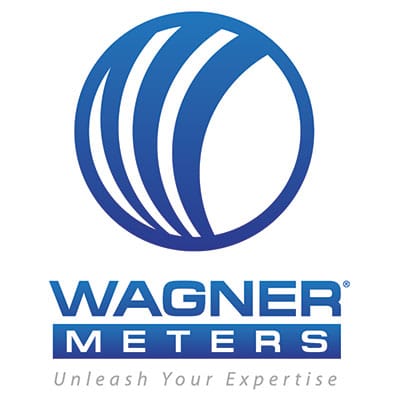How Much Does Hardwood Flooring Cost?
If you’re putting down hardwood flooring in a space of 500 square feet, you can expect to pay about $3,000 to $6,000—including both labor and materials.1
The cost, though, can vary significantly depending on some factors, such as the type of wood species, the grade of the wood, the flooring pattern, and more.
Sound like a big investment to you?
If you’re on the fence about this decision, this page will help you consider various aspects of the investment. We’ll cover:
- Factors that affect the cost of hardwood flooring
- Hardwood flooring costs by wood species
- Installation costs
- Whether the cost of hardwood flooring is worth it
- Hardwood care costs
- Tips to save money on hardwood flooring
Having been in the moisture measurement industry since the 1960s, Wagner Meters has witnessed the huge impact that moisture can have on expensive investments like hardwood flooring. That’s why we’ll also discuss some critical moisture measures you can take to keep maintenance costs down and preserve your flooring for years to come.
Factors that Affect the Cost of Hardwood Flooring

Different species and grade of wood are just some factors that impact wood price.
Hardwood flooring costs fall into two main categories: about 60% of the costs are materials, and 40% are labor. Here, we’ll look at factors that primarily affect the cost of the materials:
- Wood species
- Grade
- Finish
- Pattern
- Floor size
Wood species
The type of wood you choose for flooring will make a big difference in the price of the flooring. Different species of wood have different availability and may be easier or harder to harvest and process into floorboards.
As the name indicates, hardwood flooring comes from hardwood—the wood of a deciduous tree. This wood is generally denser, grows slower, and is more expensive than softwood. It’s less likely to get scratched and dented quite as easily.
Pine, though, is one softwood sometimes used for wood flooring. Other less expensive options are bamboo and maple. More high-end species, on the other hand, are hickory, white oak, and Brazilian walnut.
We’ll cover specific wood species and their pricing down below.
Grade
Wood grade has to do with how the floorboards look. It’s not about durability or quality.2 A higher grade indicates wood with a greater consistency in appearance and fewer imperfections, knots, wormholes, or streaks.
Valenti Flooring, a family-owned and operated flooring business, explains that the typical grades of hardwood flooring are:3
- Select
- #1 Common
- #2 Common, sometimes known as the “Rustic” or “Builder’s” grade
In this list, Select will have the highest quality of appearance—and price—while #2 Common will be the lowest. But again, it’s all about what you want your floor to look like. Many people appreciate the unique character of #2 Common for their floor.
Finish
Hardwood floors can come prefinished or unfinished. You may assume that unfinished floors are the best deal, but it depends on whether you’re going to pay someone to finish the flooring.
Prefinished floors tend to be more expensive when it comes to materials, but you will save money on labor by not having to pay someone to finish the floor.4 Unfinished floors may, however, be less expensive if you decide to stain them yourself.
Pattern
The pattern of your hardwood flooring refers to the design of the floorboards once they’re installed. The most common one is a straight pattern in which all the boards run end-to-end parallel (or perpendicular) to the longest wall of a room.
Other more sophisticated patterns tend to cost more because they involve more labor and require more material. A couple of examples are:
- Chevron: The wood floor planks have diagonal ends that meet each other to form a continuous V-shaped pattern.
- Herringbone: Wood floor planks are at a 90° angle to their adjacent planks, creating a zigzag design.
Wide planks can also be more expensive than narrower wood planks, though they’re easier to install.
Floor size
Naturally, the size of the floor will impact both the amount of material you need and the labor required to install the floor. Forbes estimates that hardwood flooring, on average, costs about $3,000 to $6,000 per 500 square feet of space.5
Something many people don’t consider is the shape of that space.
Open-home plans are much easier to work with than closed plans with smaller, irregularly shaped spaces or stairways. If your space is more unusual, the installation quote may be higher.
Hardwood Flooring Costs by Wood Type
As already mentioned, species plays a role in how expensive wood flooring will end up being. Take a look at these common flooring materials, their prices, and some of their pros and cons.
Please note that these prices are estimates for total installation costs when using these wood species. The numbers will vary based on the other factors discussed in this article, too.
Pine
Pine, which is actually a softwood rather than a hardwood, is a less expensive wood flooring material, costing about $4.60 to $10 per square foot.6
Pine is fairly resistant to moisture, making it less susceptible to movement or moisture damage once installed. It also takes stain well. But because it’s a less dense material, it does have a greater tendency to dent or scratch.
Maple
Maple costs around $5 to $10 per square foot.7 It has a light, sometimes reddish, color and is a very durable flooring material.
Both hard maple and soft maple work well for flooring, though hard maple, because of its “hard wearing properties and tight smooth grain” is “ideal for high traffic flooring applications, such as theatres, concert halls, gymnasiums and basketball courts.”8
Cherry
Cherry, about $6 to $12 per square foot, is enjoyable to work with and finishes well. Once the wood is dry, it’s not affected much by changes in moisture, either. Cherry also has a quality that causes it to slowly darken as it’s exposed to UV light.9

Bamboo flooring is a durable and affordable option.
Bamboo
Technically a grass rather than a wood, bamboo is a sustainable and often affordable flooring option, coming in around $5 to $11 per square foot. It is harder, and thus more durable, than most hardwoods and is also very resistant to moisture problems.
Hickory
Hickory is about $6 to $13 per square foot. It’s a higher-quality hardwood that finishes well, but unfortunately, it’s difficult to machine and glue. It does hold nails and screws but has a “tendency to split,” so it requires some caution when you’re working with it.10
Hickory also tends to undergo a large amount of shrinkage,11 meaning that moisture measurement is especially important with this type of flooring.
Red oak
Red oak is a light brown to reddish color and comes at about $8 to $13 per square foot. It’s a durable wood and takes stain well, but like hickory, it has a high shrinkage rate when affected by moisture.12
White oak
White oak has very similar characteristics to red oak, aside from its color. Its price is also similar: $8 to $15 per square foot.
Because it’s widely available, white oak is common for flooring and many other uses.13
White ash
White ash is a lighter wood with a grayish heartwood and a straight grain. It costs anywhere from $9 to $13 per square foot.
This species of wood can be stained. It’s also easy to work with whether you’re machining, nailing, screwing, or gluing it.14
Walnut
Walnut is a very beautiful and rarer type of wood, known for its warm color. It’s also easy to work with and takes finishes well. That explains why you can expect to pay about $11 to $20 per square foot to have it in your home.
WOOD magazine points out that people often choose walnut because of its dark color. For this reason, “walnut is rarely stained. It might, however, require some selective coloring to even out tone variations, or match sapwood to heartwood.”15
Now that you know more about the cost of flooring materials, what about installation? What kind of variation can you expect with those costs?
Hardwood Floor Installation Costs

Installer puts in a floating floor.
The total cost for a hardwood floor installation (including materials) is about $6 to $12 per square foot, according to surveys done by Home Advisor. This price can go up to as high as $25 per square foot.16
One major factor that plays into this price is the method of installation—one of three options:
- Nail-down
- Glue-down
- Floating
Nail-down costs about $2 to $4 per square foot (no materials included). It’s an inexpensive option when installing a floor over a wooden subfloor. It may not be best, though, if moisture changes tend to be an issue in your area since it might secure your floor a little too well. This will prevent the wood from being able to move slightly as it adjusts to changes in the environment.
Glue-down is about $3 to $5 per square foot and is common when installing a floor over a concrete slab. Though glue is more expensive, it can help to reduce floor movement.17
And finally, floating floor installations, which involve floorboards that click together rather than being attached to the subfloor, cost about $3 to $8 per square foot.
The method of installation is one of many considerations. You may also have to include other labor, such as:
- Moving furniture and appliances
- Removing old flooring
- Removing molding, trim, and baseboards
- Installing or repairing the subfloor
- Repairing joists
- Installing underlayment
Whichever services you need will affect the quote you get from a floor installer.
So, as you’re adding up the numbers, you may wonder whether you want to make this kind of investment for your home. Let’s consider the advantages and disadvantages.
Is the Price of Hardwood Floors Worth It?
Hardwood floors are a definite value-add to a home—not only for your use and enjoyment as the homeowner but also as part of the real estate. As a natural material, wood is more susceptible to moisture and other potential damage, but you can reduce these disadvantages with the proper care.
First, though, the advantages:
- Hardwood flooring is very durable.
- It can last a lifetime (even up to 100 years!).
- It can be refinished more than engineered flooring.
- It has a variety of colors, finishes, and styles.
- It increases resale value by as much as 2.5%.18
- It’s a great hypoallergenic option.
And what about the disadvantages?
- Hardwood flooring can be an expensive investment.
- It is more susceptible to moisture damage than other types of flooring.
- It could be easily scratched or dented.
Many of these disadvantages, though, will vary case by case. In fact, you can avoid the last two with proper care.
Hardwood Care Costs
Hardwood flooring is a major investment up-front, but thankfully, its maintenance and care are quite simple and inexpensive. And when you properly care for your hardwood flooring, you won’t have to worry about refinishing and repairing it as often (many people do it every ten years or so).
Hardwood is fairly low maintenance. Keep it clean by sweeping it with a soft broom or vacuuming it regularly to remove dirt and debris.
If your floor needs a deeper clean, avoid using a mop with water. Instead, opt for a soft cloth and some appropriate wood floor cleaner. Especially avoid anything acidic (like vinegar or lemon juice) or ammonia or baking soda, which can scratch the floor.19
And speaking of scratch and dent prevention, place rugs or mats in high-traffic areas and put furniture pads on heavy objects.
When it comes to water, wipe up spills immediately to avoid any lasting effects.
Moisture damage can sometimes be subtle, though. Changes in humidity can affect the flooring, causing it to warp or cup. So, having a way to monitor environmental conditions is key.
One such option is Floor Sentry, a data logger inserted into your hardwood floor at installation. It’ll alert you to any potentially damaging changes in temperature or relative humidity so that you can take appropriate action to prevent these problems.
That’s one major money-saving step with hardwood flooring—and we’ll go over more below.
But first, what about refinishing?
Refinishing costs
Refinishing a wood floor (sanding, staining, and finishing), on average, costs about $2 to $8 per square foot. The lower end of that range involves doing it yourself, whereas the higher end would include hiring a professional.20
If you just want to screen and recoat the floor—which means removing scratches and adding a coat of polyurethane—you can expect the price to be on the lower end.21
Tips to Save Money on Hardwood Flooring
From scouting for good deals to doing part of the installation work yourself, you can find ways to make your hardwood flooring investment more doable for your finances.
Putting in your own hardwood floor, for example, is one way to save on all the cost of labor. However, these installations are a technical process, and we only recommend you proceed on your own if you feel confident in your skills.
Nevertheless, there are some other things you can still do:
- Move furniture yourself rather than paying the installation team to do it.
- Remove old flooring yourself.
- Shop around for deals and discounts.
- Use a lower grade of flooring.
When it comes to the grade of the flooring, the Valenti Flooring team points out that if you’re using a darker stain, you probably won’t even be able to tell the difference between #2 Common and #1 Common.22
Keep Your Investment from Self-Destructing
Let’s say you decide to take the plunge and invest in a beautiful hardwood floor for your home. You’ll do everything you can to save money, but you also want something quality that you’ll enjoy for years to come. That means you’ll be putting a significant amount into this project.
And one of the best ways to protect that investment is by preventing moisture damage.
Here’s the deal:
Moisture doesn’t discriminate based on price tag. If your floorboards aren’t at the right moisture content to begin with, or they end up in an environment with a fluctuating humidity level, they’re at risk.
You can prevent this in two ways:
For one, make sure your floor installer (or you, if you’re DIYing) uses a high-quality wood moisture meter to get your floor to the right moisture content for the home environment.
And second, ask your floor installer about the possibility of installing a data logger like Floor Sentry to act as an in-floor alert system.
This way, you’ll prevent problems, avoid costly repairs, and truly have peace of mind about your new investment.
- “How Much Does Hardwood Flooring Cost in 2023?” Forbes Home.
- “What Are the Different Grades of Hardwood Flooring?” Home Flooring Pros.
- “Different Grades of Hardwood Flooring,” Valenti Flooring.
- “What Are the Different Types of Wood Flooring?” Home Flooring Pros.
- “How Much Does Hardwood Flooring Cost in 2023?”
- Most of the prices in this section are based on customer surveys by HomeAdvisor.
- “How Much Does Hardwood Flooring Cost in 2023?”
- Sustainable American Hardwoods, American Hardwood Export Council, p. 11.
- Ibid., p. 9.
- Ibid., p. 30.
- Ibid.
- Ibid., p. 14.
- Ibid., p. 16–17.
- “Get to Know Hardwood: Species Guide,” Real American Hardwood.
- “Nuts About Walnut,” WOOD Magazine.
- “How Much Does It Cost to Install Hardwood Floors?” HomeAdvisor.
- “Which Wood Flooring Installation Method Should You Choose?” Wood Floor Business.
- “Do Hardwood Floors Provide the Best Return on Investment?” Realtor.com.
- “How to Clean Hardwood Floors,” Home Flooring Pros.
- “How Much Does It Cost to Refinish Hardwood Floors?” HomeAdvisor.
- “Cost of Refinishing Hardwood Floors (DIY & Pro Prices),” Home Flooring Pros.
- “Different Grades of Hardwood Flooring.”

Wagner Meters is a family-owned American business that aims to provide solutions in moisture measurement technology that will enhance the quality and value of each customer’s project. With an almost 60-year legacy of innovation, Wagner continues to be a resource for both individual craftsmen and high-performance commercial endeavors.
Last updated on March 17th, 2025



